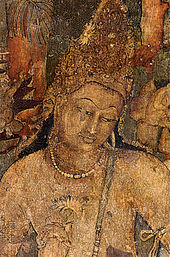Bhimbetka Cave Paintings Pdf File

The white colour(bottom) was made from grinding limestone with vegetable oil. The rock shelters have preserved the paintings from rain water. Bhimbetka is a UNESCO World Heritage Centre. Tip for people who may want to go there: There are guides available from the Madhya Pradesh State Department of Tourism at that. The Bhimbetka rock shelters are an archaeological World Heritage site located in Raisen District in the Indian state of Madhya Pradesh. The Bhimbetk. Article by Ajay.
Modern entrance to the Lascaux cave On September 12, 1940, the entrance to the Lascaux Cave was discovered by 18-year-old Marcel Ravidat. Ravidat (died in 1995) returned to the scene with three friends, Jacques Marsal, Georges Agnel, and Simon Coencas, and entered the cave via a long shaft. The teenagers discovered that the cave walls were covered with depictions of animals. Galleries that suggest continuity, context or simply represent a cavern were given names. Those include the Hall of the Bulls, the Passageway, the Shaft, the Nave, the Apse, and the Chamber of Felines. The cave complex was opened to the public on July 14, 1948. By 1955,, heat, humidity, and other contaminants produced by 1,200 visitors per day had visibly damaged the paintings.

As air condition deteriorated fungi and increasingly infested the walls. Consequently, the cave was closed to the public in 1963, the paintings were restored to their original state and a monitoring system on a daily basis was introduced. Lascaux II, an exact copy of the Great Hall of the Bulls and the Painted Gallery opened in 1983 in the cave's vicinity, a compromise and attempt to present an impression of the paintings' scale and composition for the public without harming the originals. A full range of Lascaux's parietal art is presented a few kilometres from the site at the Centre of Prehistoric Art, Le Parc du Thot, where there are also live animals representing ice-age fauna. Ochroconis lascauxensis [ ] Ochroconis lascauxensis is a species of fungus of the phylum, in May 2012 officially described and named after the locality of its first emergence, the Lascaux cave. It was along with a closely related second species Ochroconis anomala, first observed in 2000 inside the cave and the following year black spots appeared among the cave paintings. No official announcement on the effect and/or progress of attempted treatments has ever been made.
As of 2008, the cave contained. In January 2008, authorities closed the cave for three months, even to scientists and preservationists. A single individual was allowed to enter the cave for 20 minutes once a week to monitor climatic conditions. Now only a few scientific experts are allowed to work inside the cave and just for a few days a month but the efforts to remove the mold have taken a toll, leaving dark patches and damaging the pigments on the walls. In 2009 it was announced: Mould problem 'stable'. In 2011 the fungus seemed to be in retreat after the installment of an additional, even stricter conservation program.
Geographic setting [ ]. The famous shaft scene of Lascaux: a man with a bird head and a bison.
According to and who both studied presumably similar art of the of Southern Africa, this type of art is spiritual in nature relating to visions experienced during ritualistic. These trance visions are a function of the human brain and so are independent of geographical location., a professor of classical art and archeology at the University of Cambridge, has further postulated in his series,, that dot and lattice patterns overlapping the representational images of animals are very similar to hallucinations provoked by sensory-deprivation. He further postulates that the connections between culturally important animals and these hallucinations led to the invention of image-making, or the art of drawing. The conservation room at Lascaux The opening of Lascaux Cave after World War II changed the cave environment. The exhalations of 1,200 visitors per day, presence of light, and changes in air circulation have created a number of problems.
Lichens and crystals began to appear on the walls in the late 1950s, leading to closure of the caves in 1963. This led to restriction of access to the real caves to a few visitors every week, and the creation of a replica cave for visitors to Lascaux. In 2001, the authorities in charge of Lascaux changed the air conditioning system which resulted in regulation of the temperature and humidity. When the system had been established, an infestation of, a white, began spreading rapidly across the cave ceiling and walls. The mold is considered to have been present in the cave soil and exposed by the work of tradesmen, leading to the spread of the fungus which was treated with.
In 2007, a new fungus, which has created grey and black blemishes, began spreading in the real cave. Organized through the initiative of the French Ministry of Culture, an international symposium titled 'Lascaux and Preservation Issues in Subterranean Environments' was held in Paris on February 26 and 27, 2009, under the chairmanship of Jean Clottes.
It brought together nearly three hundred participants from seventeen countries with the goal of confronting research and interventions conducted in Lascaux Cave since 2001 with the experiences gained in other countries in the domain of preservation in subterranean environments. The proceedings of this symposium were published in 2011. Seventy-four specialists in fields as varied as biology, biochemistry, botany, hydrology, climatology, geology, fluid mechanics, archaeology, anthropology, restoration and conservation, from numerous countries (France, United States, Portugal, Spain, Japan, and others) contributed to this publication. The problem is ongoing, as are efforts to control the microbial and fungal growths in the cave. The fungal infection crises have led to the establishment of an International Scientific Committee for Lascaux and to rethinking how, and how much, human access should be permitted in caves containing prehistoric art. Raul Gutierrez Saenz Pdf Printer.
See also [ ].